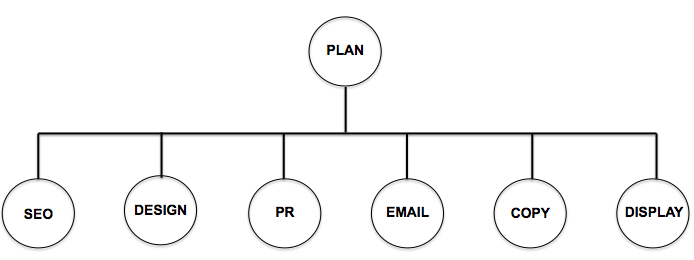The content marketing cognoscenti can sound like an industry looking quizzically at its own navel.
What is content marketing? Who invented content marketing? Is content marketing the best name for what we do?
Should you give a stuff? Not unless it helps you win precious attention from your prospects and customers. But, believe it or not, sometimes these points can have a fundamental impact on your ability do just that.
Try this old favourite: What’s new about content marketing?
Well, nothing
The prevailing argument is that there’s nothing new about content marketing and it’s been knocking about since time immemorial.
But if it’s just marketing as usual, why is the idea that most content suffers from the whiff of crap just as popular? With most things (technology, campanology, swimming) we tend to get better with time and practice. Not worse.
So if it’s not the content, maybe it’s time to get all Karl Marx and investigate the means of production.
Traditional Structure
If you follow the “nothing new” mantra there’s a strong chance you’ll have an internal and/or agency structure focused on core marketing disciplines.
It might look a bit like this.
In this structure different teams will share a strategy but set their own goals, plan their own campaigns and deliver their own reports. As a rule, teams will collaborate sporadically, but rarely systematically.
And, until relatively recently, these structures worked pretty well. But not any more. It’s all changed now.
Okay, it’s a BIT different
You can argue there’s nothing new in the idea of content, but it’s harder to argue there’s nothing new on the content landscape. It has changed beyond all recognition.
Three phenomena emerged and they are driving changes and challenging marketing teams to this very day.
Social Media Exploded
Delivering new forums where customers learn, network and buy products and services from anyone who chooses to engage with them.
Marketing Automation Took Off
Bringing new methods to engage customers with sophisticated, targeted nurturing programmes.
Google Got Tough
Spending billions tuning its algorithm to do one thing better: serve up the content most relevant to every search and put over-optimised gobbledygook in it’s black and white blenders.
The net result of these changes is a convergence around the one thing that helps you deal with all of them: top-notch content.
Evolved Marketing Structure
In order to be relevant in the new world order, marketers of all disciplines are now reinventing themselves as content providers: it’s goodbye to Jim’s SEO Services and hello to Jim’s Content Services.
And a new marketing structure is emerging. It looks a bit like this.
Now the split nature of disciplines (and limited collaboration between them) becomes a big problem on two levels:
Content Siloes
Each discipline will create content for their own goals and objectives, leading to missed optimisation opportunities and weaknesses.
Content Duplication
Each discipline will create versions of the same content, leading to wasted resources, confused messaging and, at worst, simmering rivalries.
If you put it that way…
The rise of content’s power and importance is forcing marketing teams to collaborate more closely in how it’s produced.
Content marketing does not change the disciplines of marketing. But successful content teams learn to bring their skills together to plan, create, promote and measure content in a focused, systematic and holistic way.
New Marketing Structure
The goal isn’t to have everyone creating their own content. It’s to have everyone feeding into one program that’s releasing goodies as people layer their skills and value into the mix of every piece you produce.
The new structure looks a bit like this.
The best content marketing (whether ebooks, videos, infographics) is a result of end-to-end collaboration: strategic, compelling, beautiful, easy to find, fun to share, presentable in an inbox and a stand out in any display environment.
Summing Up
While the core idea of content hasn’t changed, a shifting customer landscape means a greater content requirement that needs to be organised effectively. A failure to unite disciplines will lead to chaos, duplication, rising costs and missed opportunities to optimise for real success.
If your marketing team isn’t built for collaboration then it’s time to think of something new.

Enjoyed this article?
Take part in the discussion











Comments
Luella Ben Aziza April 11th, 2014
Yes, once you ‘get’ content you see that it’s the fabric of integrated marketing. IMO it’s also the fabric (in B2B) of marketing and sales alignment, which forces you to align with buyers. A challenge is the mix of skills that need to collaborate IF you believe that you have ‘technical’ people and ‘creative’ people.
Neil Stoneman April 11th, 2014
Exactly Luella, the integration should be built in. How are you? All good I hope.
Luella Ben Aziza April 13th, 2014
Good thanks dude – learning, doing, thinking 🙂
Neil Stoneman April 14th, 2014
Cheers Ryan. Over the years I’ve learned to read your mind and steal your ideas. It’s always worked a treat 🙂